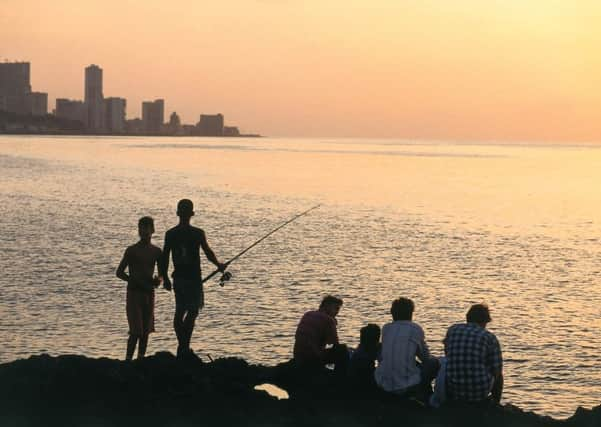Travel review: Havana - mustn’t crumble


“I wanted to get here before the rush,” he explained. Everyone, even a few stray Yanks, seems to fear an influx of American tourists now that “relations” between the two countries are warming up after 50 years of isolation. “It’s going to go crazy”, said the Californian. “The mafia would just love to get back in”.
For half a century Cuba has been a no-go area for American tourists and business, legal or not, after Fidel Castro threw them out. His ire was not with individuals but with the US government, which had backed the harsh Cuban dictator Batista against Castro’s communists. Their images are familiar, Fidel with a cigar, Che with his beret. You’ll see them as soon as you land at the José Martí international airport – named after a fellow revolutionary who was cut down early in the struggle.
Advertisement
Hide AdAdvertisement
Hide AdIn 1961, with a communist government installed, it effectively banned Cubans from travelling abroad, worried that the struggling nation would depopulate. A few years ago this ban was lifted, though most Cubans can not afford to travel abroad. The US had a reciprocal ban on travel to Cuba.
The infrastructure has suffered. Many colonial buildings from the Spanish era have fallen down, or are doing so. Pavements and roads are potholed. Restoration is ongoing. It’s all so fascinating to see. In busy Obispo street ancient cannon barrels are planted upright in the road to demarcate pedestrian zones. Cliquey boutique hotels and cafes are appearing. European and Korean cars are now familiar.
The smartly dressed Californian had flown via Mexico, requesting no stamp in his passport when he landed in Cuba. Before long they will be shipping over in thousands from Florida, less than 100 miles to the north, and flying in from all points in the US, following belatedly in the steps of Ernest Hemingway, who wrote The Old Man And The Sea in Havana.
They’ll certainly change it and enrich the tourist economy, a vital revenue for Cuba. In return, its police look after the safety of the visitors who buy its rum and cigars and use its hotels and restaurants.
Advertisement
Hide AdAdvertisement
Hide AdIt is still a state-controlled economy, with low-cost rental housing, internationally famous medical care, schooling – and low wage levels. The waiter at a small restaurant near our swanky hotel was paid £13 a month. At the Jardin Oriente in the old town, eating in an exotic courtyard open to the sky, we had two rum cocktails, four glasses of wine, two main courses and two puddings for that waiter’s monthly pay.
This Havana experience was totally wonderful. We walked at random, often the sole tourists venturing into the sort of areas you would avoid in London or Chicago. The less intrepid can take a taxi cheaply, and, for even less money, share one of the old Yank “taxis particular” which run on set routes like small buses. We got into a Pontiac and rattled with strangers to the Playas del Este, some 20 miles down the coast for £1.50 each.
It was weekend, and the local beaches were crammed with hard-working hordes from Havana ready to unwind. Europeans like us were incomers but were left alone – with frequent warnings from the beach police to keep our possessions guarded.
That night we eschewed our Havana hotel and slept over in a casa particular – a common form of visitor accommodation in Cuban homes. The neat self-catering cottage in a quiet garden was £18 – half as much again as that waiter’s monthly wage. There were mangoes and hummingbirds. Supper (the Cuban staple of rice, beans and fish or meat) was delivered by a street hawker.
Advertisement
Hide AdAdvertisement
Hide AdBack in Havana we took the ferry (more like a floating metal cabin) across the harbour to Regla, an unspoilt town. Along the shore is Casablanca where there is a Che museum and a fabulous fort that stages nightly tableaux. A huge statue of Jesus faces across the strait to Havana. We ate fish at a casa particular and were served rum mojitos crammed with mint from the garden. We sent postcards – which arrived home weeks after we did. Cuba still censors its mail.
• Getting there: Not too much choice of direct flights from the UK. We booked a Virgin flight and two- week B&B hotel package, staying at the charming old fashioned Ambos Mundos on bustling Obispo in old Havana and the iconic Nacional on the Malecon waterfront. The cost for two was around £3,000.
Currency: The normal unit is the CUC, worth about 66p or a euro. You can get it at the airport and in banks and some hotels. Sterling and euros are often accepted and so are credit cards but check before you go.